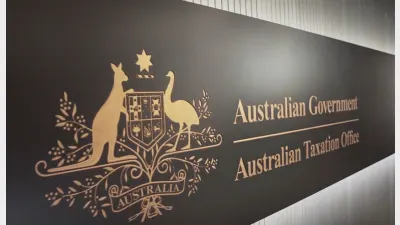Choice impact minimal
Choice may have been the biggest thing to hit the Australian superannuation industry in 2005, but its impact has been minimal.
The bottom line finding of research conducted by the Association of Superannuation Funds of Australia (ASFA) was that member churn generated by the advent of choice was around 4 per cent — well below the forecasts of even the most conservative forecasters.
What the ASFA data showed was that while in the first three months of choice 7 per cent of people changed funds, only 4 per cent of those people chose a new fund as “a conscious act of choice”, with 2 per cent going to a new fund because it came with a new job and 1 per cent changing because of the closure of an old employer fund.
In other words, despite all that was written about choice and the millions of dollars spent by funds on advertising campaigns, most Australians remain impassive about their superannuation and where it is being invested.
However, the figures for member churn may have looked very different if the new choice regime had been introduced during a period of poor investment returns by superannuation funds and master trusts.
Figures released in late February by the Investment and Financial Services Association revealed that the rush to self-managed superannuation funds (SMSFs) had peaked in 2002-03.
What was significant about 2002-03? It represented the tail end of the three-year period during which superannuation returns dropped into negative territory for the first time in more than five years.
Superannuation fund executives who were around during the years of negative returns will well remember the complaints they received from fund members and, indeed, the threats from some members to go out and do their own thing.
It follows, then, that while Australians once again demonstrated their relative indifference to superannuation during the first eight months of choice, they did so comfortable in the knowledge that their funds had just generated two successive years of double-digit returns.
So the real question that ought to be asked by superannuation funds is how the new choice regime will affect them in the event they start generating more modest returns.
What the ASFA research and similar data compiled by Mercer reveals is that superannuation fund members have gone progressively cold on the notion of changing funds.
The ASFA data shows that the percentages of respondents indicating that they were “very likely” or “likely” to change fell markedly between October 2004 and October 2005.
ASFA said that one reason for this decline was that those most likely to exercise choice had already done so, although the falls in the percentages were much bigger than could be explained by such behaviour.
It said that fund members in many funds had now gone through a cycle of contemplating change, and that a larger proportion of members were now more “rusted on” to their fund than they had been in the past.
“This is a positive result indicating both increased awareness/engagement and an increased loyalty to current funds,” the ASFA research said.
Looking over the horizon, the ASFA research predicted that the Howard Government’s new industrial relations regime might be another catalyst.
It said the Commonwealth’s WorkChoices legislation was likely to have a significant impact on choice of fund, particularly after July 1, 2008, when various transitional arrangements preserving the previous state-based industrial provisions expire and default funds are no longer specified by Commonwealth Awards.
“However, initially, the maximum number of employees being provided with choice might not exceed 200,000 and could well be less, with the number actually exercising choice only a small fraction of that,” it said.
The ASFA research stops short of identifying clear-cut winners and losers from the introduction of choice, but notes that industry funds are trading well and that retail funds also appear to be generally prospering.
It notes that, to date, interest in SMSFs appears to have trailed off but observes: “When investment returns from managed investments decline, as they will, there may be increased interest in SMSFs, but countering this is increased regulatory activity in regard to advisers involved with SMSFs, and increased community awareness of the time and cost involved in running a SMSF.”
The ASFA analysis probably underestimates the importance of returns and their link to the rise and rise of SMSFs.
If the 2001-03 period is any indicator, a combination of choice of fund and poor returns may yet see a resurgence in the establishment of SMSFs.
Recommended for you
Super funds are strengthening systems and modelling member benefits ahead of payday super.
The Australian Taxation Office (ATO) has approved real-time payments for superannuation, removing a major hurdle ahead of payday super reforms.
The investment body has raised questions about ART’s Tabcorp shareholding, urging clarity for members on gambling-related super fund investments.
Australian super funds have posted early gains in FY26, driven by strong share market performance and resilient long-term returns.











